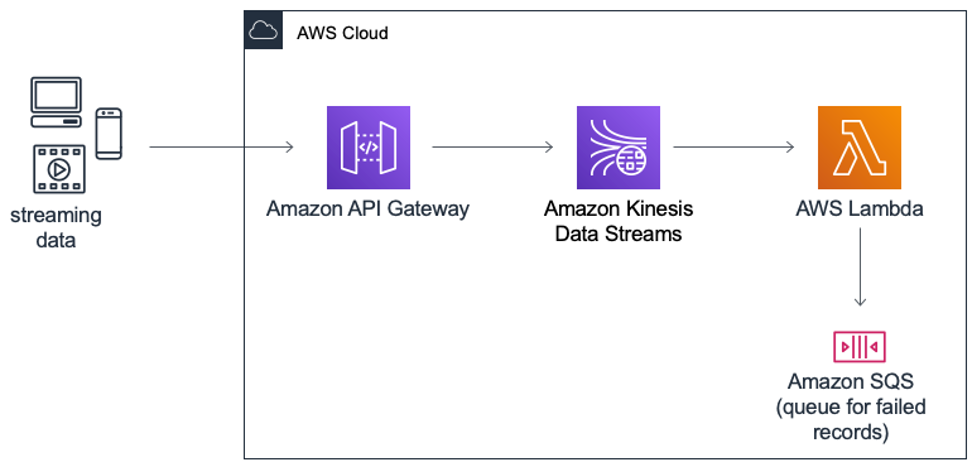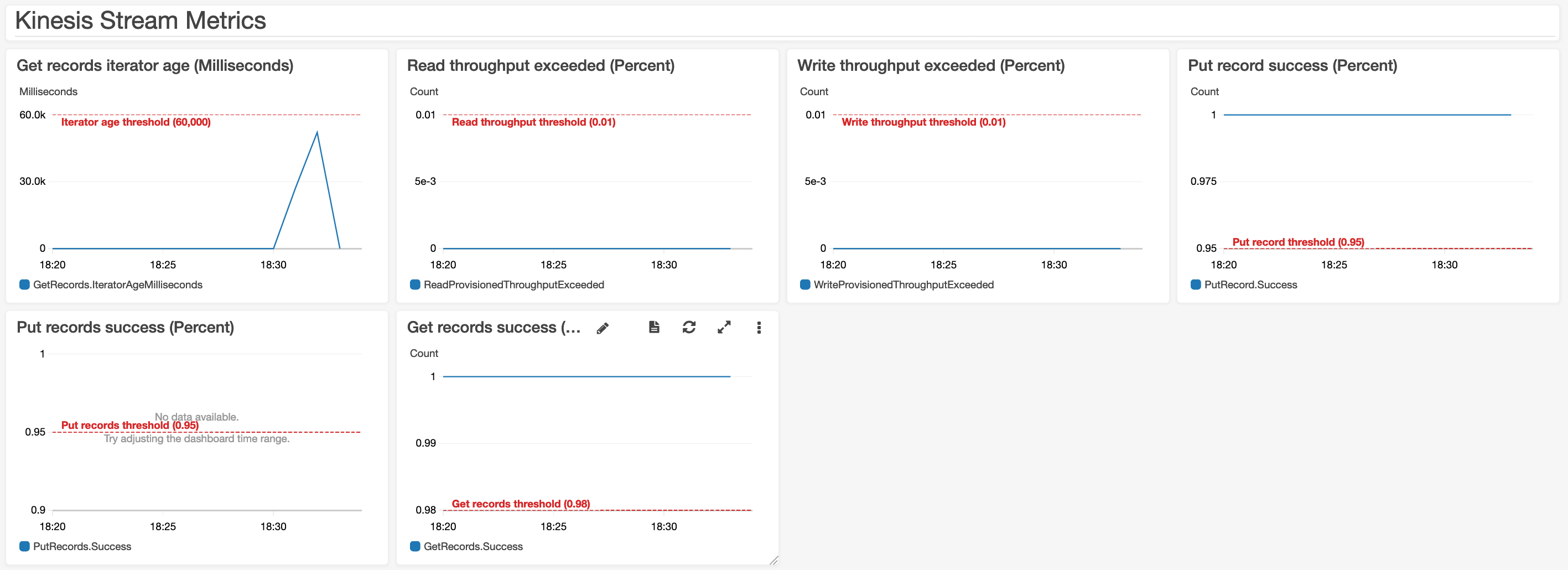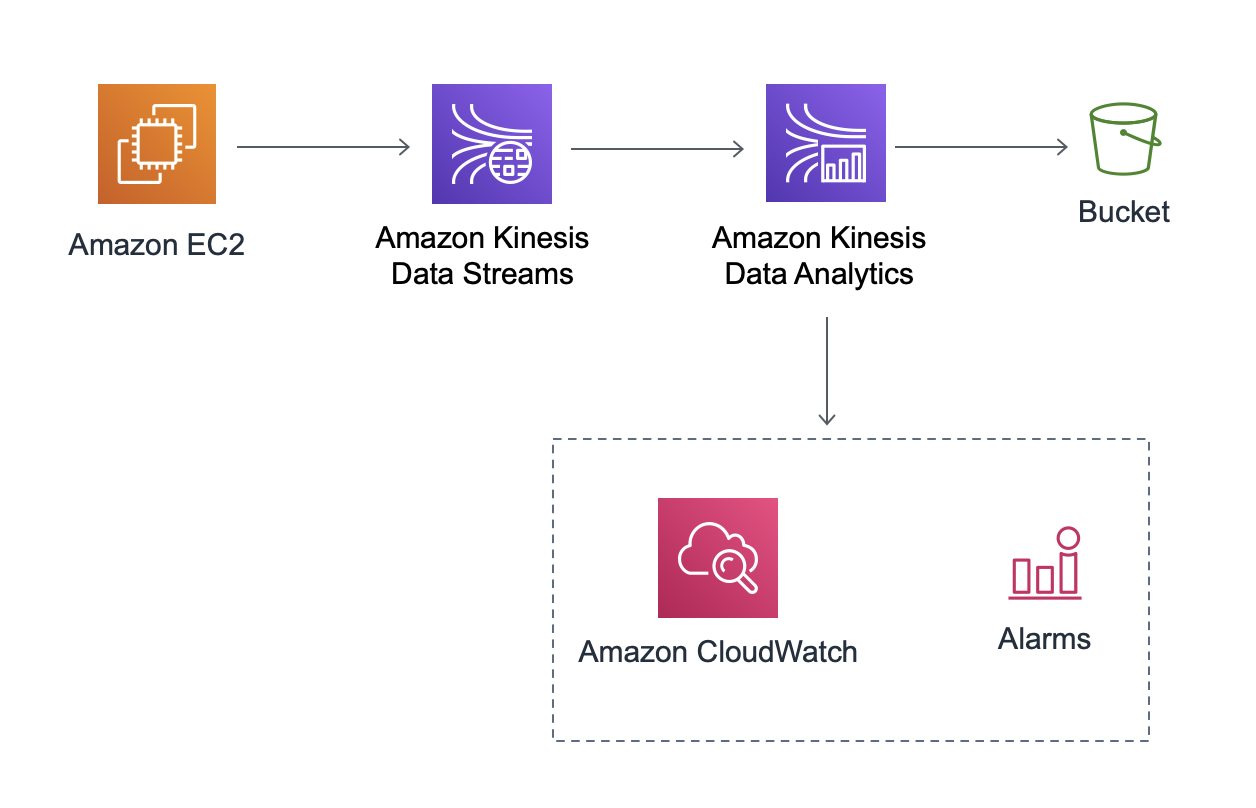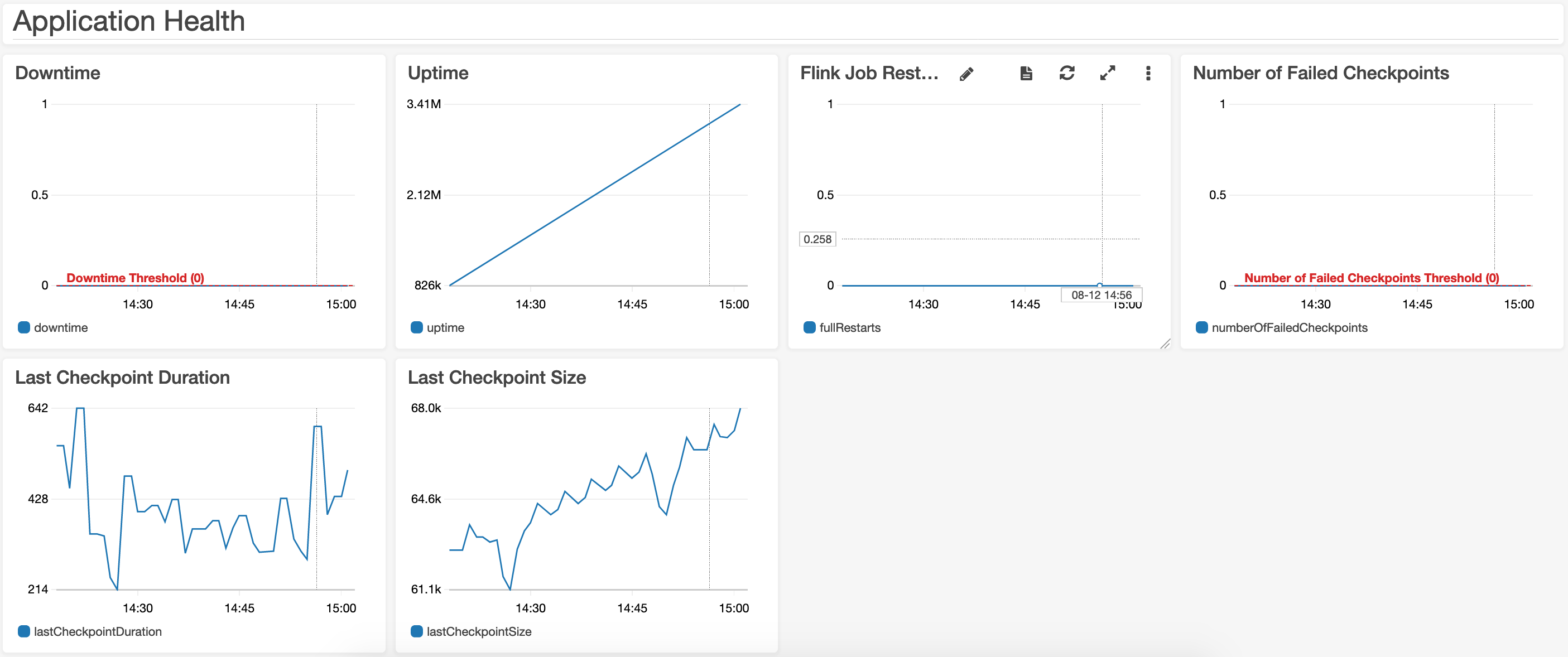Streaming data use cases follow a similar pattern where data flows from data producers through streaming storage and data consumers to storage destinations. Sources continuously generate data, which is delivered via the ingest stage to the stream storage layer, where it's durably captured and made available for streaming processing. The stream processing layer processes the data in the stream storage layer and sends the processed information to a specified destination.
The challenge with these use cases is the set up time and effort that developers require to create the resources and establish the best practices needed by the streaming data services (such as access control, logging capabilities, and data integrations).
The AWS Streaming Data Solution for Amazon Kinesis automatically configures the AWS services necessary to easily capture, store, process, and deliver streaming data. The solution provides common streaming data patterns for you to choose from that can serve as a starting point for solving your use case or to improve existing applications. You can try out new service combinations to implement common streaming data use cases, or use the solution as the basis for your production environment.
The solution implements two patterns with more coming soon. All of them use Amazon Kinesis Data Streams for streaming storage, and you can combine and extend the different components (which are built using the AWS CDK) to meet your needs.
The first pattern includes an API Gateway REST API that acts as proxy to Kinesis; an Amazon Kinesis Data Stream that stores the data records; an AWS Lambda function that processes records from the data stream; and an Amazon SQS queue that stores metadata about failed records.
API Gateway provides a layer of abstraction from the streaming storage, and AWS Lambda is used as the data consumer since it is best suited for simple use cases that don’t require large amounts of application state (such as transaction order processing, data cleansing, and filtering).
Also included are Amazon CloudWatch alarms and a dashboard to monitor the stream health.
The second pattern includes an EC2 instance that generates data using the Kinesis Producer Library; an Amazon Kinesis Data Stream that stores the data records; an Amazon Kinesis Data Analytics application that process the incoming records and saves data to an Amazon S3 bucket.
Also included are Amazon CloudWatch alarms and a dashboard to monitor the application health / progress, resource utilization, and specific events / errors.
The solution provides a demo producer application, which is configured to write 100 records per second to the data stream. There's also a demo Java application for Kinesis Data Analytics, in order to demonstrate how to use Apache Flink sources, sinks, and operators. The schema used is the same one provided in Getting Started with Amazon Kinesis Data Analytics:
{
"EVENT_TIME": "2020-08-01T12:00:00.000Z",
"TICKER": "AMZN",
"PRICE": 50
}By default, the demo producer and consumer applications will not run after the stacks are created. To enable them, follow the steps below:
Note: Application name is an output of the CloudFormation stack.
aws kinesisanalyticsv2 start-application --application-name <application-name> --run-configuration {}
Note: This command needs to be run from the EC2 instance launched as part of the stack.
Note: Stream name is an output of the CloudFormation stack.
sudo java -jar /tmp/aws-kpl-demo.jar <stream-name> <aws-region> <seconds-to-run>
├── deployment
│ └── cdk-solution-helper [Lightweight helper that cleans-up synthesized templates from the CDK]
├── source
│ ├── bin [Entrypoint of the CDK application]
│ ├── images [Assets referenced in the README file]
│ ├── kinesis [Demo applications for the KPL and Apache Flink]
│ ├── lambda [Custom resources for features not supported by CloudFormation]
│ ├── lib [Constructs for the components of the solution]
│ ├── patterns [Stack definitions]
│ └── test [Unit tests]
You can launch this solution with one click from the solution home page.
Please ensure you test the templates before updating any production deployments.
To customize the solution, follow the steps below:
- AWS Command Line Interface
- Node.js 12.x or later
- Python 3.8 or later
- Java 1.8 (only required if using Apache Flink)
- Apache Maven 3.1 (only required if using Apache Flink)
Note: The commands listed below will build all patterns. To only include one, you can modify the CDK entrypoint file on
source/bin/streaming-data-solution.ts
git clone https://github.com/awslabs/aws-streaming-data-solution-for-amazon-kinesis
2. After introducing changes, run the unit tests to make sure the customizations don't break existing functionality
cd ./source
chmod +x ./run-all-tests.sh
./run-all-tests.sh
Note: In order to compile the solution, the build-s3 will install the AWS CDK.
ARTIFACT_BUCKET=my-bucket-name # S3 bucket name where customized code will reside
SOLUTION_NAME=my-solution-name # customized solution name
VERSION=my-version # version number for the customized code
cd ./deployment
chmod +x ./build-s3-dist.sh
./build-s3-dist.sh $ARTIFACT_BUCKET $SOLUTION_NAME $VERSION
Why doesn't the solution use CDK deploy? This solution includes a few Lambda functions, and by default CDK deploy will not install any dependencies (it'll only zip the contents of the path specified in fromAsset). In future releases, we'll look into leveraging bundling assets using Docker.
In addition to that, there are also some extra components (such as the demo applications for the KPL and Kinesis Data Analytics) that are implemented in Java, and the build-s3 script takes care of packaging them.
Create the CloudFormation bucket defined above, as well as a regional bucket in the region you wish to deploy. The CloudFormation templates are configured to pull the Lambda deployment packages from Amazon S3 bucket in the region the template is being launched in.
aws s3 mb s3://$ARTIFACT_BUCKET --region us-east-1
aws s3 mb s3://$ARTIFACT_BUCKET-us-east-1 --region us-east-1
aws s3 sync ./global-s3-assets s3://$ARTIFACT_BUCKET/$SOLUTION_NAME/$VERSION --acl bucket-owner-full-control
aws s3 sync ./regional-s3-assets s3://$ARTIFACT_BUCKET-us-east-1/$SOLUTION_NAME/$VERSION --acl bucket-owner-full-control
- Get the link of the template uploaded to your Amazon S3 bucket (created as $ARTIFACT_BUCKET in the previous step)
- Deploy the solution to your account by launching a new AWS CloudFormation stack
- Kinesis Producer Library
- Amazon Kinesis Data Analytics Java Examples
- Flink: Hands-on Training
- Streaming Analytics Workshop
- Kinesis Scaling Utility
Copyright 2020 Amazon.com, Inc. or its affiliates. All Rights Reserved.
Licensed under the Apache License, Version 2.0 (the "License"); you may not use this file except in compliance with the License. You may obtain a copy of the License at
http://www.apache.org/licenses/LICENSE-2.0
Unless required by applicable law or agreed to in writing, software distributed under the License is distributed on an "AS IS" BASIS, WITHOUT WARRANTIES OR CONDITIONS OF ANY KIND, either express or implied. See the License for the specific language governing permissions and limitations under the License.





